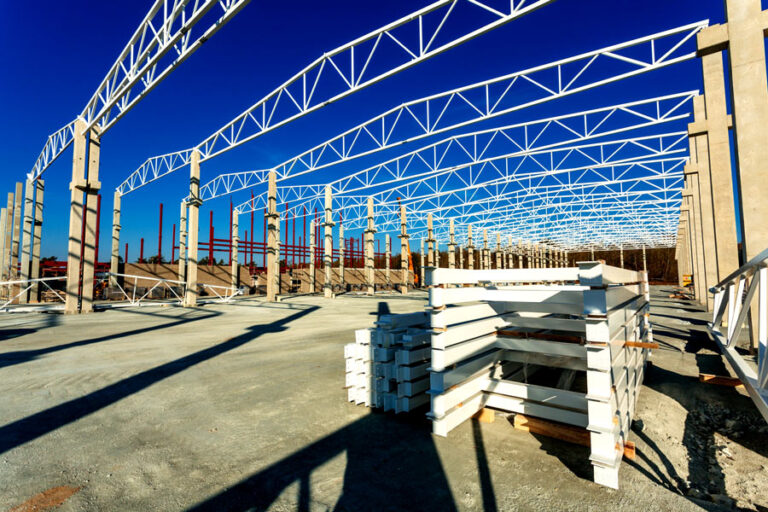Introduction
In today’s world of modern architecture and construction, structural steel frame have become synonymous with strength, durability, and design flexibility. From towering skyscrapers and commercial complexes to warehouses and bridges, steel framing systems form the backbone of countless structures worldwide.
The popularity of structural steel lies in its unmatched combination of resilience, cost-effectiveness, and environmental benefits. Engineers and architects increasingly rely on it to deliver projects that meet demanding safety standards while maintaining aesthetic appeal and efficiency.
What Is a Structural Steel Frame?
A structural steel frame is a building framework made of vertical columns and horizontal beams welded, bolted, or riveted together to support floors, roofs, and walls. This skeleton structure distributes loads evenly, allowing buildings to reach great heights without compromising stability.
Unlike traditional concrete or timber framing, steel frames are prefabricated off-site with precise dimensions, ensuring quick and efficient assembly on-site. They form the core support for modern high-rise buildings, industrial facilities, and infrastructure projects.
Key Components of Structural Steel Framing
- Beams – Horizontal members that support loads from floors and ceilings.
- Columns – Vertical members that carry the weight of the structure to the foundation.
- Girders – Large beams that support smaller beams or joists, distributing loads efficiently.
- Bracings – Diagonal supports that provide lateral stability and resist wind or seismic forces.
- Connections – Bolts, welds, and rivets that link steel components securely together.
Each of these components plays a crucial role in ensuring the structural integrity and performance of the building.
Advantages of Using Structural Steel Frames
1. Superior Strength-to-Weight Ratio
Steel is significantly stronger than concrete or wood, allowing for slender yet robust structures. Its high strength-to-weight ratio means buildings can achieve greater spans and heights without requiring bulky support systems.
2. Design Flexibility
Architects love working with steel because of its versatility. Curved shapes, open spaces, and innovative geometries are all achievable with steel frames, enabling creative and functional designs.
3. Speed of Construction
Since steel components are fabricated in controlled environments, on-site assembly is fast and efficient. This reduces labor costs, shortens project timelines, and minimizes weather-related delays.
4. Durability and Longevity
Structural steel resists pests, mold, and rot. When properly coated or galvanized, it withstands corrosion, ensuring decades of reliable performance even in challenging environments.
5. Sustainability and Recyclability
Steel is one of the most sustainable construction materials available. It’s 100% recyclable and can be reused without losing strength or quality. This makes it ideal for environmentally conscious construction and green building certifications.
6. Cost Efficiency
While initial costs may seem higher, steel frames often lead to long-term savings due to reduced maintenance, faster construction, and extended lifespan.
Applications of Structural Steel Frames
Structural steel framing systems are used in a wide variety of applications, including:
- Commercial Buildings – Offices, shopping centers, and hotels rely on steel framing for open-plan layouts and flexibility.
- Industrial Facilities – Factories, warehouses, and distribution centers benefit from steel’s ability to support large clear spans.
- Residential Construction – Modern homes increasingly incorporate steel framing for eco-friendly and durable structures.
- Bridges and Infrastructure – Steel’s high load-bearing capacity makes it ideal for bridges, towers, and stadiums.
- High-Rise Buildings – The world’s tallest skyscrapers use steel frames for their combination of strength and lightness.
The Construction Process
Building a structural steel frame typically involves the following stages:
1. Design and Engineering
Engineers and architects collaborate to design the steel structure, considering load distribution, material specifications, and safety standards. Advanced modeling software like BIM (Building Information Modeling) helps visualize and optimize the design.
2. Fabrication
Steel members are manufactured off-site in specialized facilities. Each beam, column, and connection is cut, shaped, and drilled according to precise measurements.
3. Transportation and Assembly
Prefabricated components are transported to the site, where they are assembled using cranes and skilled crews. Bolting and welding secure the frame in place quickly and efficiently.
4. Finishing and Inspection
After erection, protective coatings are applied to prevent corrosion. Quality inspections ensure the structure meets engineering and safety standards.
Challenges and Considerations
While steel framing offers numerous advantages, a few challenges should be noted:
- Thermal Conductivity: Steel conducts heat, requiring proper insulation to meet energy efficiency standards.
- Fire Resistance: Although non-combustible, steel can lose strength at high temperatures. Fireproof coatings and encasements are often added for protection.
- Corrosion Prevention: Regular maintenance and protective finishes are necessary in humid or coastal environments.
However, modern engineering and material technology have effectively minimized these issues, making structural steel one of the most reliable choices in construction.
Future of Structural Steel in Construction
As sustainability and innovation shape the construction industry, structural steel framing continues to evolve. New technologies like light-gauge steel, modular fabrication, and hybrid steel-concrete systems are redefining efficiency and sustainability.
Additionally, advancements in digital modeling, robotic welding, and AI-driven project management are streamlining the design-to-construction process, reducing waste and increasing precision.
The future is clear—structural steel remains the foundation for smart, strong, and sustainable building solutions worldwide.
Conclusion
The structural steel frame represents more than just a construction method—it’s a symbol of innovation, strength, and sustainability in modern architecture. Its ability to balance beauty and functionality makes it an essential material for the buildings of today and tomorrow.
From sleek urban towers to sprawling industrial complexes, steel frames provide the resilience and adaptability that define the built environment of the future. For anyone planning a construction project that demands longevity, flexibility, and efficiency, structural steel framing is truly the gold standard of modern engineering.
